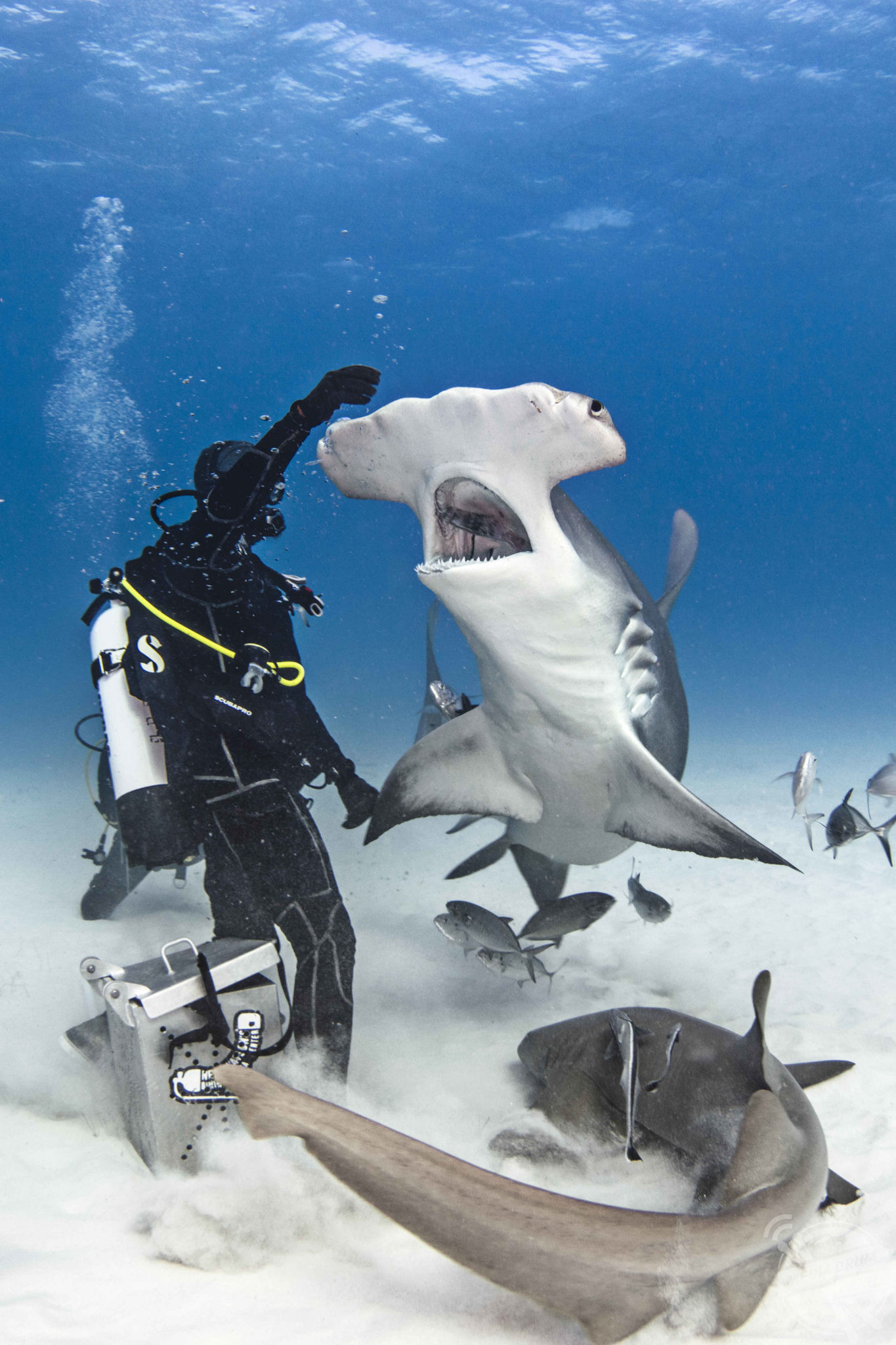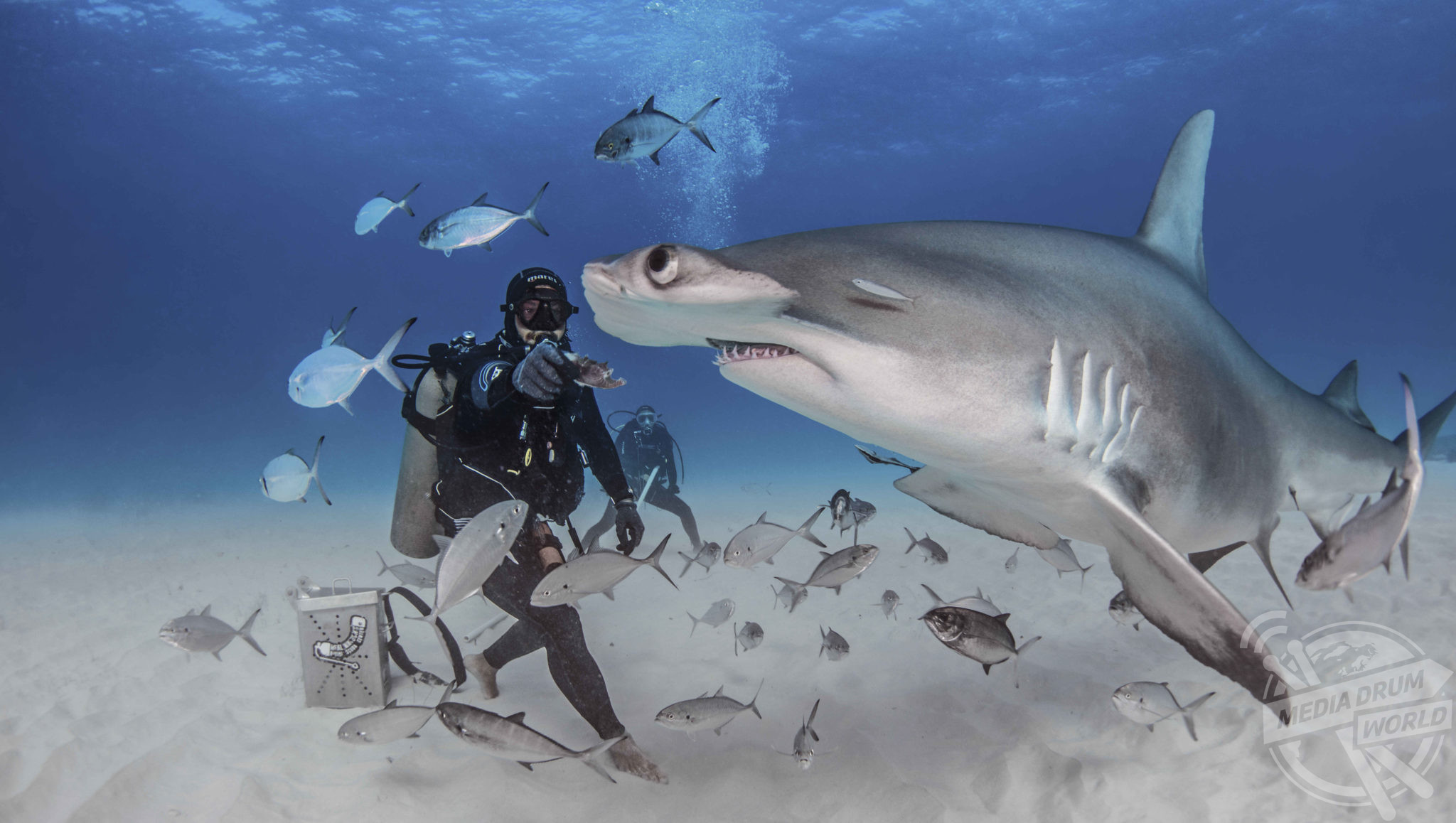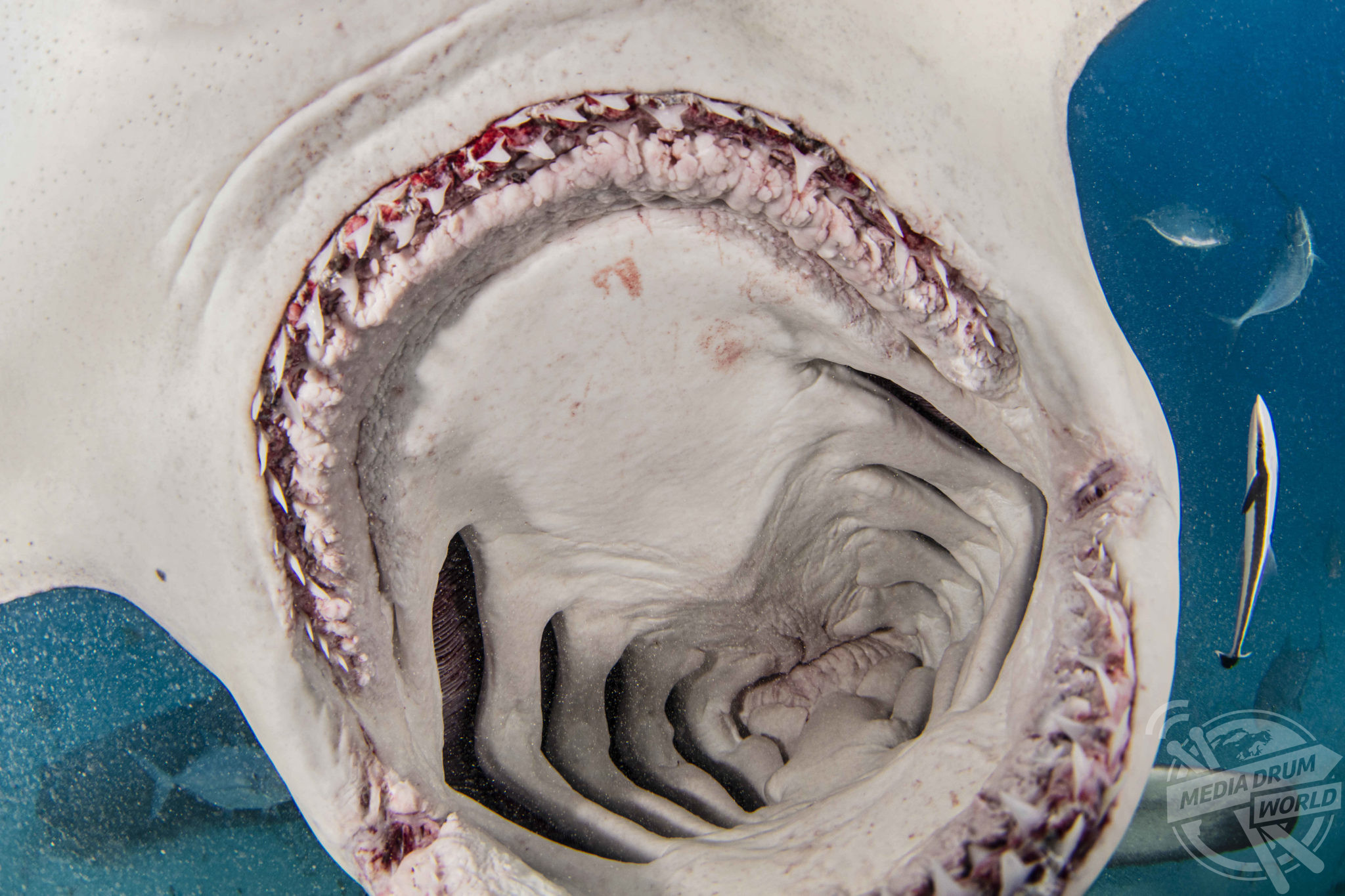By Alex Jones
PHOTOGRAPHER comes face-to-oddly-shaped-face with one of the ocean’s MOST AGGRESSIVE hunters in these spectacular underwater shots.
Remarkable photographs of great hammerhead sharks, snapped off the coast of Bimini in the Caribbean, include a close up portrait of a grinning shark, showing off its gnarly teeth; a fearless expert hand feeding a humungous hammerhead; and a diver manoeuvring one of the consummate predators away from the camera by its extraordinary snout.
The fascinating shots were captured by acclaimed underwater photographer, Ken Kiefer II (50) on a winter visit to the Bahamian island – one of very few spots on the planet where great hammerheads regularly frequent.

“Were we worried about swimming with hammerhead sharks? Quite the opposite; we always look forward to any chance to share the water with these amazing endangered beauties,” he said.
“Diving with Neal Watson’s Bimini Scuba Center is the only place in the world to reliably and safely come inches from the largest of the hammer family, the Great Hammerhead. We spend a lot of time in the water with sharks, but Great Hammers are without a doubt our favourite. Their incredibly huge dorsal fin, their musculature and unusual shape combine with their gracefulness to provide endless photo opportunities. They are more agile than most sharks and can turn on a dime.
“I’ve always loved creating images to allow others to see the beauty of underwater. I’ve been creating underwater images for over twenty years and ten years professionally. My motto is anything underwater; predators, big animals, models, maternity, swim team, as long as it’s under the surface.

“I also love being able to show people things that most won’t be able to see themselves. I firmly believe that if more people could share the water with these predators, they would have a respect for them and not feel that they are just mindless beasts and might be a little more hesitant to label them as dangerous maneaters.”
Although hammerheads are aggressive hunters – feeding on smaller fish, octopuses, squid, and crustaceans- they do not actively seek out human prey, but are very defensive and will attack when provoked.
The largest species of their type, great hammerhead sharks can grow up to 20 feet in length and weigh up to 1,000 pounds, although smaller sizes are more common. Every winter great hammerheads flock to Bimini, drawn to the warm, nutrient-laden waters of the gulf stream and ideal breeding grounds.

The creature’s wide-set eyes give them a better visual range than most other sharks. And by spreading their highly specialised sensory organs over their wide, mallet-shaped head, they can more thoroughly scan the ocean for food. The sharks have also been known to pin down their prey against the seabed with its hammer-esque features – but their limited vision can play havoc with photographer’s equipment.
“Hammers have 360 vision due to their eye placement on the end of the cephalofoil – the ‘hammer’ – but they can’t see the small area inches in front of their head, or directly under,” added Ken.
“So, sometimes they might run into divers while searching for the bait. The dome of my Ikelite housing will need to be replaced after this last trip due to some teeth marks on the lens!

“I love the beauty of nature, and it’s always humbling to be in the water with any large predator. I feel much more calm and happy with sharks than any time I’m on the freeway with idiot drivers using their phones.
“My wife Kimber and I spend a lot of time trying to spread the word about the importance of sharks in the world. As the apex predators in the ocean, they keep the balance and are critical to the ocean’s health.
“We work with Sharks 4 Kids to educate about the importance as well as some of the myths portrayed by movies and such.”






